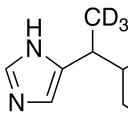Antitumor activity of Raddeanin A is mediated by Jun amino-terminal kinase activation and signal transducer and activator of transcription 3 inhibition in human osteosarcoma.
Palabras clave
Abstracto
Osteosarcoma is the most common primary malignant bone tumor. Raddeanin A (RA) is an active oleanane-type triterpenoid saponin extracted from the traditional Chinese herb Anemone raddeana Regel that exerts antitumor activity against several cancer types. However, the effect of RA on osteosarcoma remains unclear. In the present study, we showed that RA inhibited proliferation and induced apoptosis of osteosarcoma cells in a dose- and time-dependent way in vitro and in vivo. RA treatment resulted in excessive reactive oxygen species (ROS) generation and JNK and ERK1/2 activation. Apoptosis induction was evaluated by the activation of caspase-3, caspase-8, and caspase-9 and poly-ADP ribose polymerase (PARP) cleavage. RA-induced cell death was significantly restored by the ROS scavenger glutathione (GSH), the pharmacological inhibitor of JNK SP600125, or specific JNK knockdown by shRNA. Additionally, signal transducer and activator of transcription 3 (STAT3) activation was suppressed by RA in human osteosarcoma, and this suppression was restored by GSH, SP600125, and JNK-shRNA. Further investigation showed that STAT3 phosphorylation was increased after JNK knockdown. In a tibial xenograft tumor model, RA induced osteosarcoma apoptosis and notably inhibited tumor growth. Taken together, our results show that RA suppresses proliferation and induces apoptosis by modulating the JNK/c-Jun and STAT3 signaling pathways in human osteosarcoma. Therefore, RA may be a promising candidate antitumor drug for osteosarcoma intervention.




